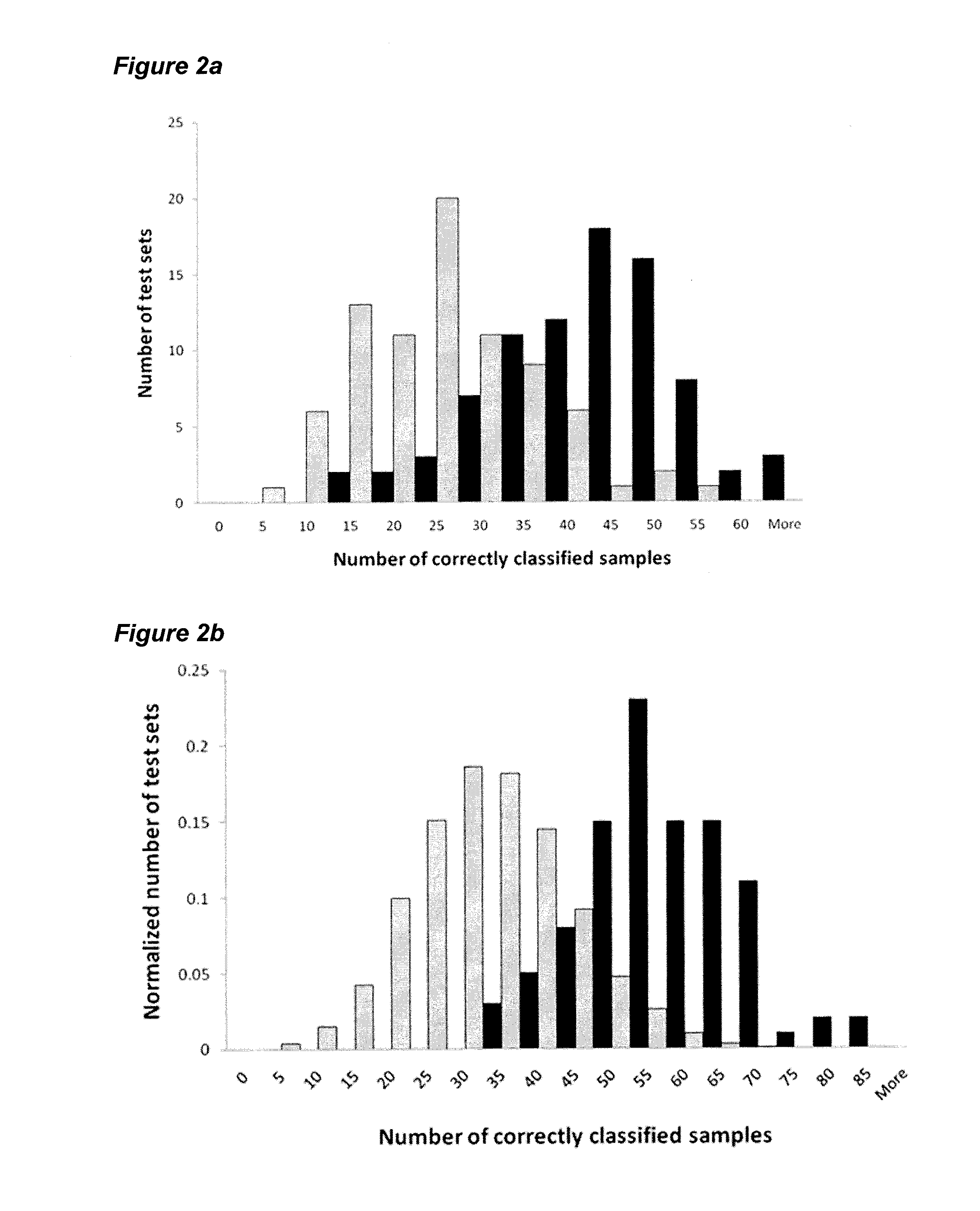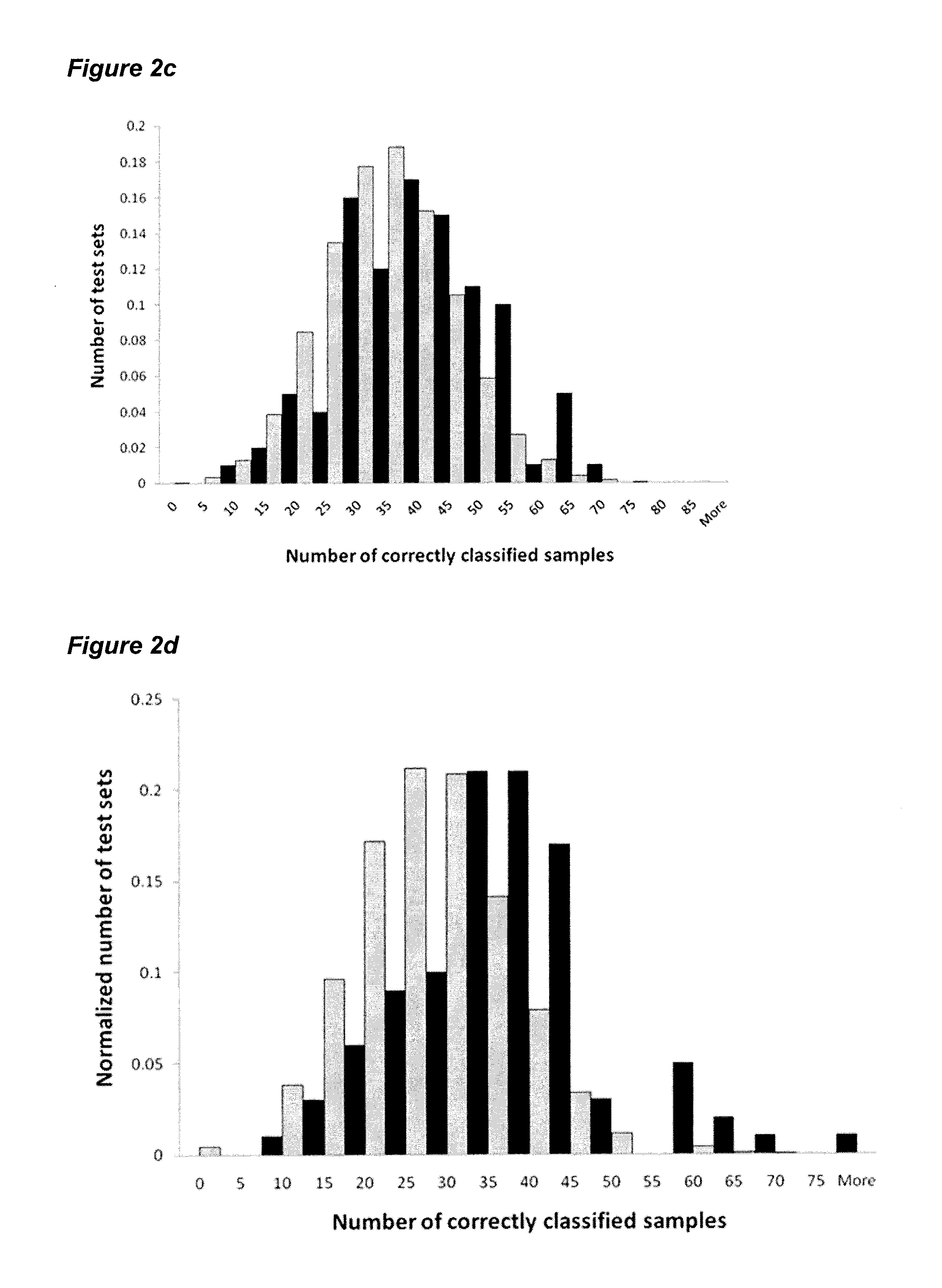Means and methods for the determination of prediction models associated with a phenotype
a prediction model and model technology, applied in the field of plant molecular biology, can solve the problems of no magic approach for identifying genes, limited forward genetics, and constant challenge to improve and shorten the timeline of breeding processes, and achieve the effect of saving time and cos
- Summary
- Abstract
- Description
- Claims
- Application Information
AI Technical Summary
Benefits of technology
Problems solved by technology
Method used
Image
Examples
examples
Gene Selection Based on Expression Profiling of Early Leaf Development
[0096]To assess the changes in the transcriptome during early leaf development, we profiled gene expression in leaf tissues using AGRONOMICS1 tiling arrays (Andriankaja et al., 2012). The third true leaf of Arabidopsis was harvested daily from 8 to 13 days after stratification. At day 8 and day 9, the third leaf was entirely composed of proliferating cells, whereas beginning at day 10, the leaf began to transition with the cells in the tip of the leaf starting to expand, while the cells in the base continued to proliferate. This gradient of cell proliferation and expansion persisted through day 11 and 12, and then, at day 13 the majority of cells in the base of the leaf also began to expand. The transcriptome profiling allowed for the identification of over 9664 genes that were differentially regulated between at least two consecutive time points. 458 genes encode transcription factors (TF) based on AGRIS (on the ...
PUM
| Property | Measurement | Unit |
|---|---|---|
| Level | aaaaa | aaaaa |
Abstract
Description
Claims
Application Information
 Login to View More
Login to View More - R&D
- Intellectual Property
- Life Sciences
- Materials
- Tech Scout
- Unparalleled Data Quality
- Higher Quality Content
- 60% Fewer Hallucinations
Browse by: Latest US Patents, China's latest patents, Technical Efficacy Thesaurus, Application Domain, Technology Topic, Popular Technical Reports.
© 2025 PatSnap. All rights reserved.Legal|Privacy policy|Modern Slavery Act Transparency Statement|Sitemap|About US| Contact US: help@patsnap.com



